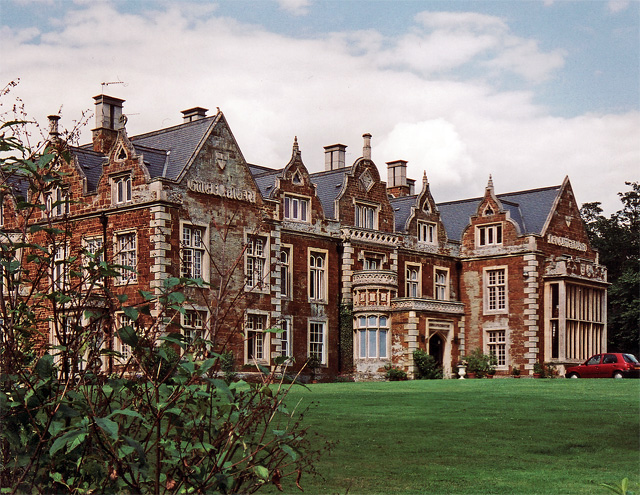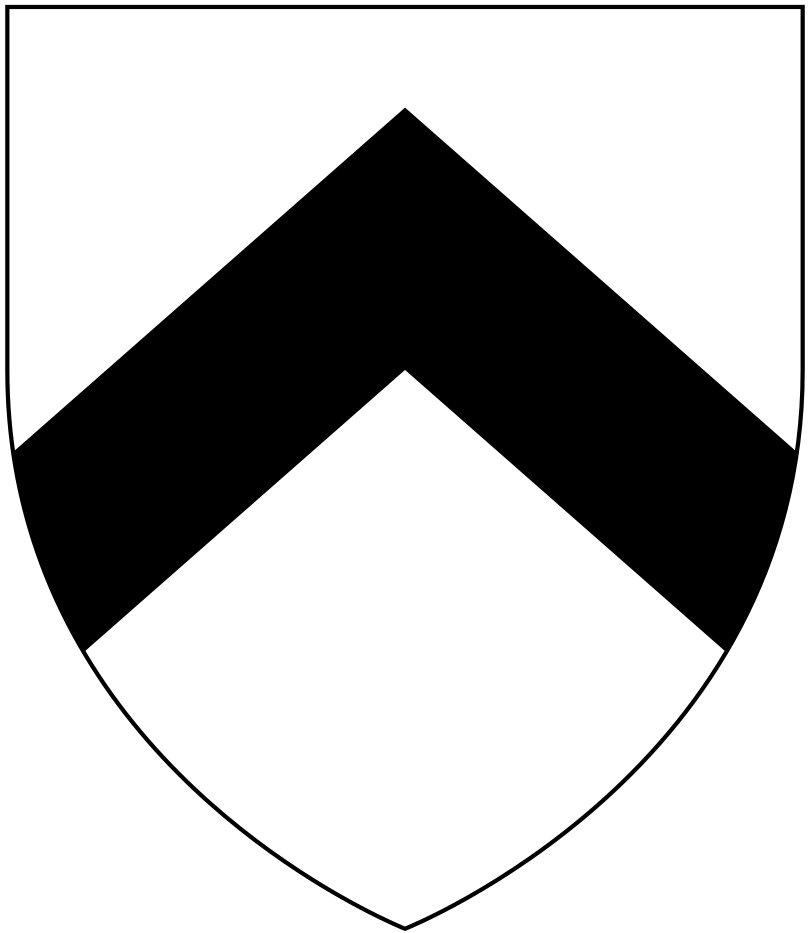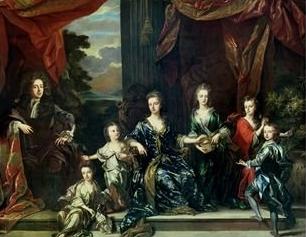|
John Dolben (politician)
John Dolben (1662 – 29 May 1710), of Epsom, Surrey, was an English barrister and Whig politician who sat in the House of Commons from 1707 to 1710. He was deeply involved in the impeachment proceedings against Dr Henry Sacheverell in 1710, and his work on the impeachment is said to have contributed to his early demise. Early life Dolben was the younger son of John Dolben, Archbishop of York, and his wife Catherine Sheldon, daughter of Ralph Sheldon of Stanton, Staffordshire, and niece of Gilbert Sheldon, Archbishop of Canterbury, and was baptised in Christ Church Cathedral, Oxford, on 1 July 1662. He was educated at Westminster School where he is listed as a pupil in 1676, and with the encouragement of his uncle Sir William Dolben, Recorder of London, was admitted at Inner Temple in 1677. He also matriculated at Christ Church, Oxford in 1678 but is not recorded as a graduate. From 1682 to 1683, he travelled abroad in France. By December 1683, he married Elizabeth Mulso, secon ... [...More Info...] [...Related Items...] OR: [Wikipedia] [Google] [Baidu] |
England
England is a country that is part of the United Kingdom. It shares land borders with Wales to its west and Scotland to its north. The Irish Sea lies northwest and the Celtic Sea to the southwest. It is separated from continental Europe by the North Sea to the east and the English Channel to the south. The country covers five-eighths of the island of Great Britain, which lies in the North Atlantic, and includes over 100 smaller islands, such as the Isles of Scilly and the Isle of Wight. The area now called England was first inhabited by modern humans during the Upper Paleolithic period, but takes its name from the Angles, a Germanic tribe deriving its name from the Anglia peninsula, who settled during the 5th and 6th centuries. England became a unified state in the 10th century and has had a significant cultural and legal impact on the wider world since the Age of Discovery, which began during the 15th century. The English language, the Anglican Church, and Engli ... [...More Info...] [...Related Items...] OR: [Wikipedia] [Google] [Baidu] |
Finedon Hall
Finedon Hall is a Victorian country house in Finedon, Northamptonshire. It is a Grade II listed building. History The core of the house is 17th or 18th century, and was extensively remodelled by William Harcourt Isham Mackworth Dolben (1806–1872). Datestones indicate a range of different building phases: 1855, 1851, 1856 and 1859. The architect is unknown, but is likely to have been E. F. Law of Northampton. Mackworth Dolben was himself an 'enthusiastic' amateur architect. There is also a range of fine ancillary buildings: the Museum Tower, the Bell Tower and the Old Chapel, also listed Grade II. The estate was landscaped with advice from Humphry Repton. Until its dramatic collapse in 1951, the estate was home to the well-known monument, the Volta Tower. Ownership From the early 15th to the 18th century, the manor was in the hands of the Mulso family. On the death of the last of the Mulso line, Tanfield Mulso, Finedon passed to his daughter, Anne. She married Sir G ... [...More Info...] [...Related Items...] OR: [Wikipedia] [Google] [Baidu] |
Sir Jonathan Trelawny, 3rd Baronet
Sir Jonathan Trelawny, 3rd Baronet (24 March 1650 – 19 July 1721) was an English Bishop of Bristol, Bishop of Exeter and Bishop of Winchester. Trelawny is best known for his role in the events leading up to the Glorious Revolution which are sometimes believed to be referenced in the Cornish anthem "The Song of the Western Men". Life He was born at Trelawne in the parish of Pelynt, Cornwall, the eldest surviving son of Sir Jonathan Trelawny, 2nd Baronet and Mary Seymour, daughter of Sir Edward Seymour, 2nd Baronet. He was educated at Westminster School and then went to Christ Church, Oxford at the start of the Michaelmas term of 1668 where he distinguished himself as a scholar. A staunch royalist, he was ordained in 1673 and became a beneficed clergyman. He was appointed rector of South Hill on 4 October and of St. Ives on 12 December 1677, becoming Bishop of Bristol in 1685. He was one of the Seven Bishops tried for seditious libel under James II. Trelawny and the other b ... [...More Info...] [...Related Items...] OR: [Wikipedia] [Google] [Baidu] |
Liskeard (UK Parliament Constituency)
Liskeard was a parliamentary borough in Cornwall, which elected two Members of Parliament (MPs) to the House of Commons from 1295 until 1832, and then one member from 1832 until 1885. The constituency was abolished by the Redistribution of Seats Act 1885. History The parliamentary borough was based upon the community of Liskeard in the south-eastern part of Cornwall. Sedgwick estimated the electorate at 30 in 1740. Namier and Brooke considered it was about 50 in the 1754–1790 period. The right of election before 1832 was in the freemen of the borough. This constituency was under the patronage of the Eliot family, which acquired the predominant interest by 1722. There were no contested elections between at least 1715 and 1802. In the early 19th century the Whigs attempted to expand the electorate to include householders. During the 1802 general election, 48 householders claimed the right to vote but their ballots were rejected by the Mayor (see the note to the 1802 elec ... [...More Info...] [...Related Items...] OR: [Wikipedia] [Google] [Baidu] |
Member Of Parliament
A member of parliament (MP) is the representative in parliament of the people who live in their electoral district. In many countries with bicameral parliaments, this term refers only to members of the lower house since upper house members often have a different title. The terms congressman/congresswoman or deputy are equivalent terms used in other jurisdictions. The term parliamentarian is also sometimes used for members of parliament, but this may also be used to refer to unelected government officials with specific roles in a parliament and other expert advisers on parliamentary procedure such as the Senate Parliamentarian in the United States. The term is also used to the characteristic of performing the duties of a member of a legislature, for example: "The two party leaders often disagreed on issues, but both were excellent parliamentarians and cooperated to get many good things done." Members of parliament typically form parliamentary groups, sometimes called caucuse ... [...More Info...] [...Related Items...] OR: [Wikipedia] [Google] [Baidu] |
Thomas Pitt
Thomas Pitt (5 July 1653 – 28 April 1726) of Blandford St Mary in Dorset, later of Stratford in Wiltshire and of Boconnoc in Cornwall, known during life commonly as ''Governor Pitt'', as ''Captain Pitt'', or posthumously, as ''"Diamond" Pitt'' was an English merchant involved in trade with India who served as President of Madras and six times as a Member of Parliament. He was the grandfather of William Pitt, 1st Earl of Chatham ("Pitt the Elder") and was great-grandfather of Pitt the Younger, both prime ministers of Great Britain. Origins Pitt was born at Blandford Forum, Dorset, the second son of Rev. John Pitt (1610-1672), Rector of Blandford St Mary (whose mural monument survives in that church), by his wife Sarah Jay. His second cousin was the poet Rev. Christopher Pitt (1699-1748) whose mural monument survives in the church of St Peter and St Paul, Blandford Forum, displaying the arms of Pitt: ''Sable, a fesse chequy argent and azure between three bezants''. The ear ... [...More Info...] [...Related Items...] OR: [Wikipedia] [Google] [Baidu] |
Bengal
Bengal ( ; bn, বাংলা/বঙ্গ, translit=Bānglā/Bôngô, ) is a geopolitical, cultural and historical region in South Asia, specifically in the eastern part of the Indian subcontinent at the apex of the Bay of Bengal, predominantly covering present-day Bangladesh and the Indian state of West Bengal. Geographically, it consists of the Ganges-Brahmaputra delta system, the largest river delta in the world and a section of the Himalayas up to Nepal and Bhutan. Dense woodlands, including hilly rainforests, cover Bengal's northern and eastern areas, while an elevated forested plateau covers its central area; the highest point is at Sandakphu. In the littoral southwest are the Sundarbans, the world's largest mangrove forest. The region has a monsoon climate, which the Bengali calendar divides into six seasons. Bengal, then known as Gangaridai, was a leading power in ancient South Asia, with extensive trade networks forming connections to as far away as Roman Egypt. ... [...More Info...] [...Related Items...] OR: [Wikipedia] [Google] [Baidu] |
East India Company
The East India Company (EIC) was an English, and later British, joint-stock company founded in 1600 and dissolved in 1874. It was formed to trade in the Indian Ocean region, initially with the East Indies (the Indian subcontinent and Southeast Asia), and later with East Asia. The company seized control of large parts of the Indian subcontinent, colonised parts of Southeast Asia and Hong Kong. At its peak, the company was the largest corporation in the world. The EIC had its own armed forces in the form of the company's three Presidency armies, totalling about 260,000 soldiers, twice the size of the British army at the time. The operations of the company had a profound effect on the global balance of trade, almost single-handedly reversing the trend of eastward drain of Western bullion, seen since Roman times. Originally chartered as the "Governor and Company of Merchants of London Trading into the East-Indies", the company rose to account for half of the world's trade duri ... [...More Info...] [...Related Items...] OR: [Wikipedia] [Google] [Baidu] |
East Indies
The East Indies (or simply the Indies), is a term used in historical narratives of the Age of Discovery. The Indies refers to various lands in the East or the Eastern hemisphere, particularly the islands and mainlands found in and around the Indian Ocean by Portuguese explorers, soon after the Cape route was discovered. Nowadays, this term is broadly used to refer to the Malay Archipelago, which today comprises the Philippine Archipelago, Indonesian Archipelago, Malaysian Borneo, and New Guinea. Historically, the term was used in the Age of Discovery to refer to the coasts of the landmasses comprising the Indian subcontinent and the Indochinese Peninsula along with the Malay Archipelago. Overview During the era of European colonization, territories of the Spanish Empire in Asia were known as the Spanish East Indies for 333 years before the American conquest. Dutch occupied colonies in the area were known for about 300 years as the Dutch East Indies till Indonesian indepen ... [...More Info...] [...Related Items...] OR: [Wikipedia] [Google] [Baidu] |
Sir Gilbert Dolben, 1st Baronet
Sir Gilbert Dolben, 1st Baronet (1658-1722), of Finedon, Northamptonshire, was an English lawyer, landowner and Tory politician who sat in the English and British House of Commons between 1685 and 1715. He also served as a High Court judge in Ireland for many years. He was the grandfather of the leading anti-slavery campaigner Sir William Dolben. Background Dolben was the elder son of John Dolben, Archbishop of York, and his wife Catherine Sheldon, daughter of Ralph Sheldon of Stanton, Staffordshire. His background was strongly episcopal: he was a grand-nephew of Gilbert Sheldon, Archbishop of Canterbury and a more remote connection of John Williams, Archbishop of York. His uncle Sir William Dolben was a distinguished judge. He was the elder brother of John Dolben, who had a similar but much less successful career as a barrister and politician. Samuel Pepys, who saw him as a child, described him as "a very pretty boy, and very like his father in appearance". He went t ... [...More Info...] [...Related Items...] OR: [Wikipedia] [Google] [Baidu] |
Moiety Title
In law, a moiety title is the ownership of part of a property. The word derives from Old French ''moitié'', "half" (the word has the same meaning in modern French), from Latin ''medietas'' ("middle"), from ''medius''. In English law, it relates to parsing aspects of ownership and liability in all forms of property. In the Australian system of land title, it typically applies to maisonettes or attached cottages whereby the owner owns a share of the total land on the title and leases a certain portion of the land back for themselves from the other owner(s). Some finance institutions do not offer loans for properties on moiety titles as security. Real estate Moiety is a Middle English word for one of two equal parts under the feudal system. Thus on the death of a feudal baron or lord of the manor without a male heir (the eldest of whom would inherit all his estates by the custom of male primogeniture) but with daughters as heiresses, a ''moiety'' of his fiefdom would generally p ... [...More Info...] [...Related Items...] OR: [Wikipedia] [Google] [Baidu] |
John Closterman
John Closterman (also spelt Cloosterman, Klosterman; 1660 – 24 May 1711 (buried)) was a Westphalian portrait painter of the late 17th and early 18th centuries. His subjects were mostly European noblemen and their families. Career Born in Osnabrück in the Holy Roman Empire (now in Lower Saxony), Closterman was the son of an artist who taught him the rudiments of design. In 1679, Closterman went to Paris and worked under François de Troy. In 1681, he went to England. He worked for John Riley, painting the draperies in Riley's portraits When Riley died in 1691, Closterman finished several of his portraits. Because of his work on Riley's portraits, Charles Seymour, 6th Duke of Somerset, hired him to create some paintings. However, Somerset became dissatisfied with a portrait of the Italian painter Guercino that Closterman had painted for him, ending the relationship. Lord Halifax eventually purchased the portrait. In 1696, Closterman was invited to the court of Spain, wher ... [...More Info...] [...Related Items...] OR: [Wikipedia] [Google] [Baidu] |






